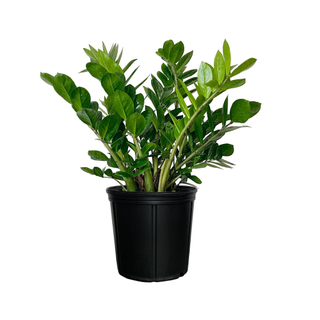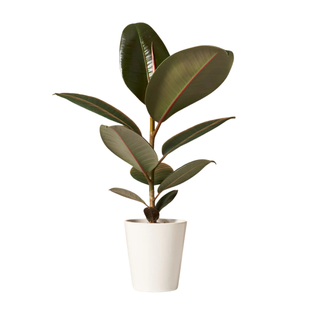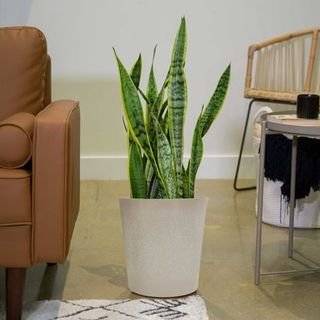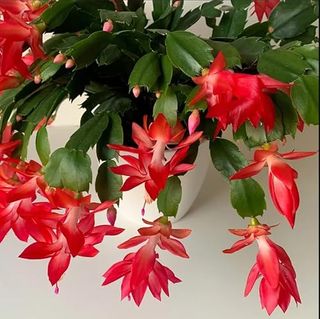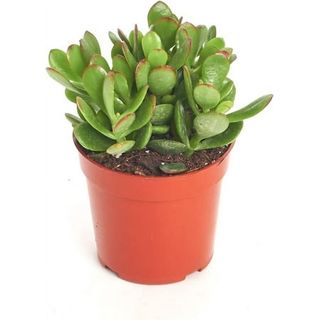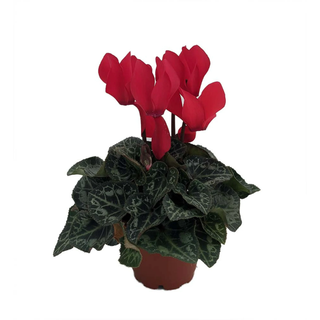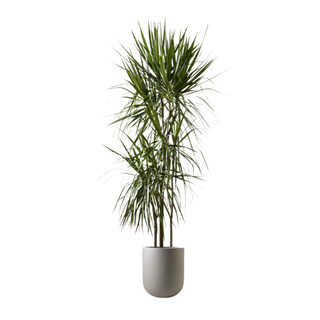Whether you are an experienced indoor plant collector with an amazing display or new to the game with just one or two treasured plants, winter temperatures can catch you if you haven’t got the best varieties of houseplants for cold rooms.
It’s always a good idea to include some cold-tolerant indoor plants in your collection (unless, of course, you live in a hot zone). The good news is there are plenty of plants to choose from that are resilient to cold temperatures. In fact, some of these plants actually relish them, and quite a few are on everyone’s most popular houseplants list.
Pick one of the following 8 plants, which should easily be up to the challenge. Remember, every plant has its limits, so it’s important to keep your eye on them and move them around if necessary.
1. ZZ plant
(Image credit: Juliya Shapoval/Getty Images)
The ZZ plant makes it onto all our “best” lists, including best low-light plants for shorter days and which indoor plants last the longest. For this reason, we think it’s one of the must-have cold-tolerant indoor plants to add to your collection.
The experts agree, too. “What’s the most hardy indoor plant? Hands down, the ZZ plant (Zamioculcas zamiifolia),” says houseplant expert Valeria Nyman. “It’s like the tortoise of houseplants. It’s slow, steady, and basically invincible. It’s native to East Africa and has evolved to handle conditions from drought to dim light. This makes it perfect for chilly indoor conditions (and a bit of neglect)!”
It will grow in gloomy spots, only needs watering once a month in winter, and doesn’t need feeding from fall right round to spring. “I’ve accidentally left one in a drafty hallway for weeks, and it pretty much didn’t flinch,” says Valeria. “It seems to thrive in temperatures as low as 50°F and survives on minimal water. Just keep those glossy, waxy leaves free of dust so it can photosynthesize properly.”
2. Rubber plant
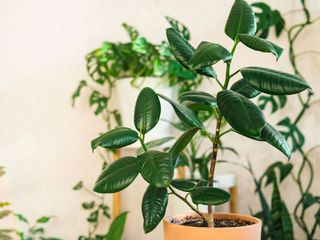
(Image credit: Kseniia Soloveva/Getty Images)
“I’d also pick the good old rubber plant,” says Valeria. “It handles cooler temperatures down to about 55°F and has a knack for bouncing back from neglect, provided you don’t let it sit in soggy soil. I’ve had one for nearly a decade. It has experienced plenty of cold winters and is now a 6-foot centerpiece.”
Part of the rubber plant’s popularity is down to it being one of the best low-maintenance indoor plants. This means it’s also one of the best houseplants for beginners. In addition to its easy-going nature there are the glossy good looking leaves to add to your interior aesthetic too.
Rubber plant care is easy. It will tolerate low-light conditions, the soil should be kept just moist in winter, and it doesn’t need feeding from fall right round to spring. Just be sure to keep the leaves dust-free, and it will continue to reward you by looking good and not letting you down right through the cold season.
3. Snake plant
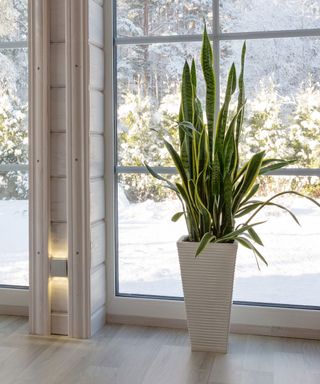
(Image credit: Olga Ionina/Getty Images)
Another houseplant that’s one of the best for dealing with difficult conditions is the snake plant, also known as sansevieria. It will survive almost anywhere, taking low light and cold temperatures really well.
This is one of the easiest houseplants to grow, which means they’re a great choice if your home is cold and drafty during the winter months, as they will see it out in style. The cylindrical foliage makes a lovely, interesting point of difference in your houseplant collection.
Snake plant care is quite simple. This plant isn’t fussy where you put it and adapts to many different indoor light conditions. It doesn’t need a lot of watering either. If you’re wondering how often to water a snake plant, apply only watering when the soil is completely dry.
Snake plants need feeding just once a year (in spring), and the leaves don’t require any special care. All in all, this makes it our kind of plant.
4. Christmas cactus
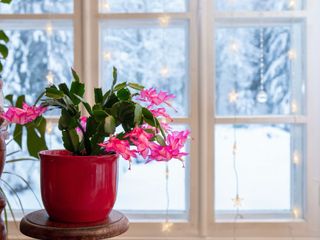
(Image credit: Helin Loik Tomson/Getty Images)
Now for one of my own favorites. Despite the tropical good looks of its pretty blooms, the Christmas cactus (also known as Schlumbergera) is a tough little beauty known for being problem-free and tolerant of adverse conditions. This means it’s a great choice if you’re looking for cold-tolerant indoor plants for winter.
The cascading, mostly bright pink flowers (they also come in red and white, but I prefer the pink ones as they’re so pretty) add a joyous note during the coldest months of the year. As soon as your plant has developed flower buds, it’s a good idea to move it to a bright spot, such as by a window. Water sparingly, and don’t allow the compost to dry out completely. That’s pretty much it for Christmas cactus care.
Look after your Christmas cactus, and it will live for a very long time, rewarding you every year with its pendant blooms. Just remember to feed it once a month from spring right through to early fall to encourage those flowers in winter.
5. Sago palm
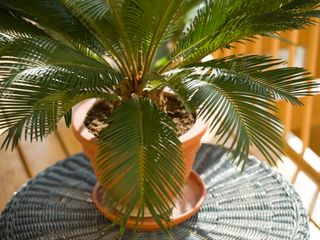
(Image credit: Rotofrank/Getty Images)
Indoor palm plants can add a tropical touch to your interior in winter and are easy to grow. Despite its name, the sago palm is not a true palm but it looks like one, with its graceful fronds and elegant good looks.
The sago palm is a very tough houseplant that tolerates a wide range of temperatures, including very cool temperatures, making it a great choice if you’re looking for cold-tolerant indoor plants that look a little exotic.
This is one of the easiest indoor palm trees to look after, too. It prefers bright, indirect light on an east, west, or south-facing windowsill. In winter, the compost should be almost dry, so cut back on watering, and there’s no need to feed them in winter either. Make sure your sago palm is positioned well away from radiators, too.
6. Jade plant
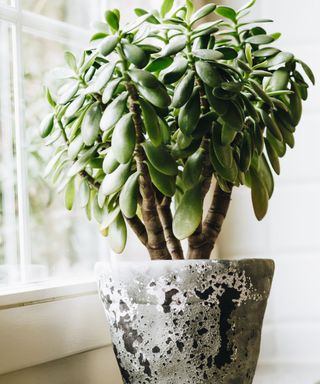
(Image credit: Natalia Klenova 500px/Getty Images)
I have plenty of these on display in my indoor plant collection as I love their easy-going nature. Jade plant care is so simple, and they’re such rewarding little plants to grow, especially as they look so nice on a windowsill in winter.
They can easily withstand low-light conditions and cold temperatures. They will even tolerate minus temperatures for a short time as long as the soil is dry. In winter, generally, it’s a good idea to reduce the watering so the compost is almost dry, as long as the leaves don’t start to wither.
My favorite variety is Crassula ovata, the one with oval leaves as suggested by the name. In fact, this particular jade plant goes by many other names too, including the friendship tree and the money plant. I think it’s the shapeliest of the jade plant varieties, and the leaves have a lovely glossy sheen to them.
7. Cyclamen
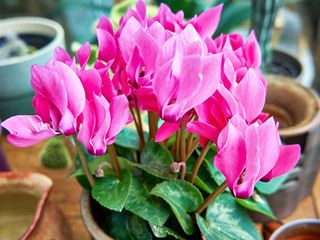
(Image credit: DR pics24/Getty Images)
Indoor cyclamen plants are one of the best winter indoor plants. They relish cool temperatures, as you might expect from a houseplant variety that has plenty of relatives that thrive outdoors.
If you want your indoor cyclamen to do well, you will need to find a cold place that is far away from heating. Indoor cyclamen plants thrive in conditions such as those offered by a glazed porch, unheated hallway, conservatory, or windowsill in an unheated room.
I just moved an indoor cyclamen plant outside to my covered porch, as I felt it wasn’t thriving indoors. The house was too hot, and this was causing it to wilt. It soon snapped back into shape in the cold air, so I left it outside.
If you have a short-lived indoor cyclamen plant, chances are your house is too warm for it. So bear this in mind next time you buy one.
8. Dragon plant
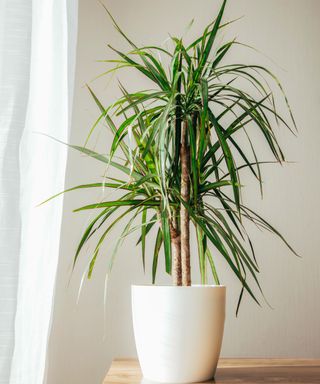
(Image credit: Elena Medoks/Getty Images)
Dragon plants or dragon trees (Dracaena marginata) also handle cooler temperatures with ease. They can withstand temperatures of 50°F with no concern, and low-light conditions aren’t a problem either.
This is another easy-care option that’s a good entry point if you’re new to caring for indoor plants. In winter, all you have to do is keep the compost just moist and occasionally sit the pot on a tray of damp pebbles to create a little humidity. You don’t need to feed them in winter, either.
Be sure to remove any dead foliage to prevent pests from setting up a home there. It’s perfectly normal for a dragon tree to shed dead leaves, and it doesn’t mean your plant is distressed. But if many leaves fall off this could mean you are overwatering. So check the soil and if it feels sodden it’s time to knock back.
FAQs
What is the most hardy indoor plant?
The most hardy indoor plant is generally considered to be the aspidistra, or cast iron plant as it’s also known. This is because it’s pretty foolproof and can be positioned in those cold, dark corners of your home where most other plants would give up.
As you would expect from the name, this is another very tough houseplant that will survive less-than-ideal conditions, including cold rooms. As long as it stays above freezing (32°F) it will be fine.
The aspidistra is a resilient plant that will thrive with very little input from you. Slot one into a space where you have previously experienced houseplant fails, and you may be surprised as you watch it thrive.


